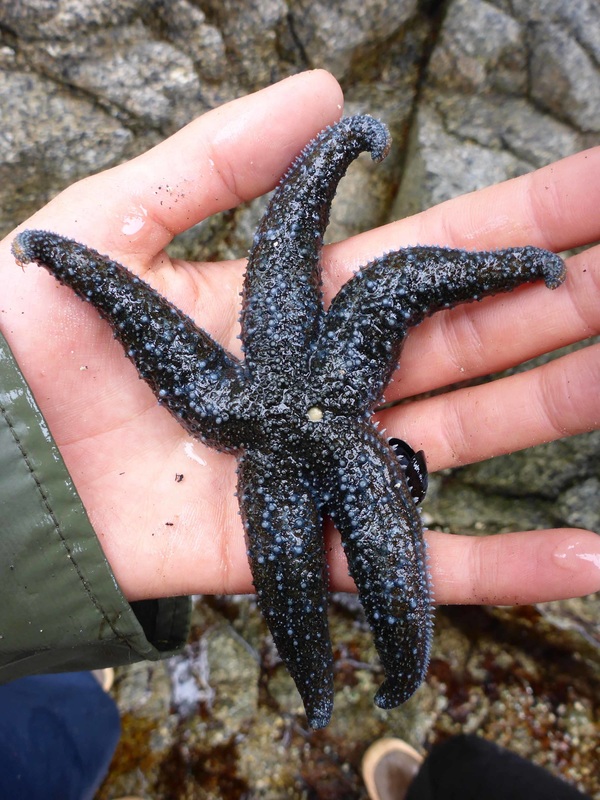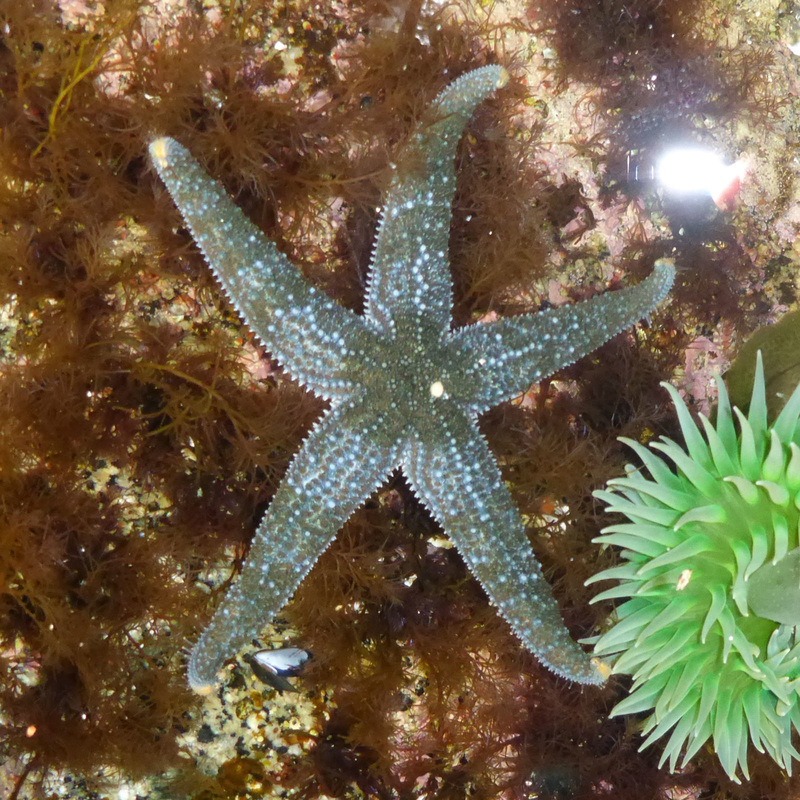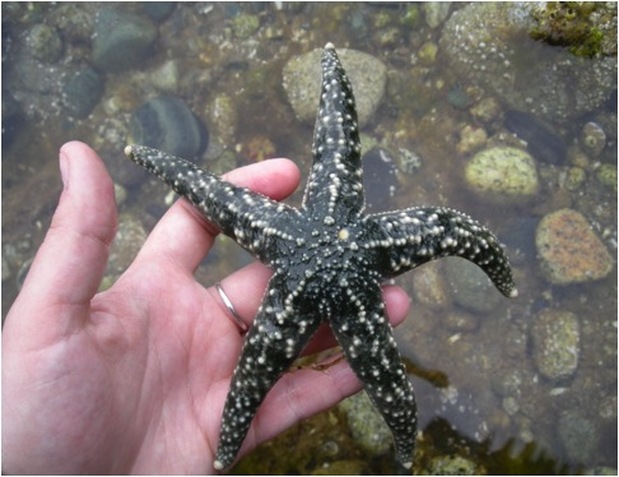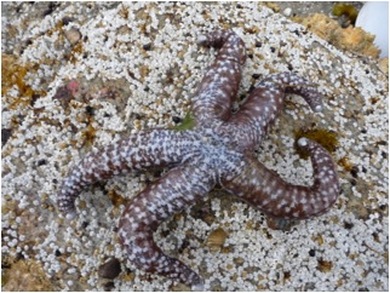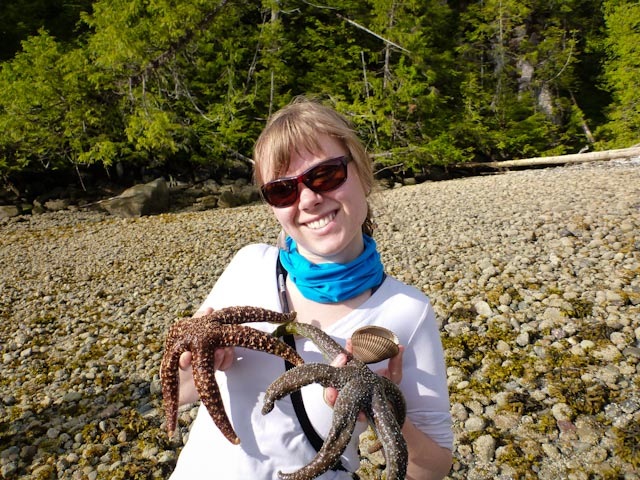Mottled star, false ochre star • Evasterias troschelii
Mottled stars in a variety of colours. Photos by Sara Wickham (top), Claire Mackenzie (bottom left), Chanda Brietzke (bottom centre), and an ES 470 participant (bottom right).
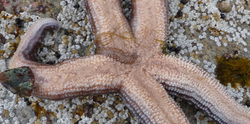
Scale worm. Photo by Chanda Brietzke.
Identification
The mottled star comes in an extreme array of colours, from brown and dark blue-grey to rust, pink, and orange. The species has 5 long rays, and grows up to 56 cm across.
Habitat & Range
The mottled star is usually found on rocks and occasionally sand in the low intertidal to subtidal, reaching depths of 70 m. It can be found in eelgrass beds as well. This species prefers protected areas over open coast.
Ranges from Alaska to California on the west coast of North America, although it is less common south of the Puget Sound. Also found on the east coast of Russia, at Kamchatka.
Similar Species
The mottled star is also known as the false ochre star because of the resemblance it bears to the ochre star (Pisaster ochraceus). However, the mottled star has a smaller central disc, with longer and more tapered arms and less pronounced spines.
Intriguing Info
It is common to find scale worms (Arctonoe spp., often A. fragilis) living commensally on the underside of the mottled star, as in the photo to the right. Scale worms feed on detritus, and while they usually live symbiotically with a sea star or other invertebrate they are occasionally freeliving.
The mottled star comes in an extreme array of colours, from brown and dark blue-grey to rust, pink, and orange. The species has 5 long rays, and grows up to 56 cm across.
Habitat & Range
The mottled star is usually found on rocks and occasionally sand in the low intertidal to subtidal, reaching depths of 70 m. It can be found in eelgrass beds as well. This species prefers protected areas over open coast.
Ranges from Alaska to California on the west coast of North America, although it is less common south of the Puget Sound. Also found on the east coast of Russia, at Kamchatka.
Similar Species
The mottled star is also known as the false ochre star because of the resemblance it bears to the ochre star (Pisaster ochraceus). However, the mottled star has a smaller central disc, with longer and more tapered arms and less pronounced spines.
Intriguing Info
It is common to find scale worms (Arctonoe spp., often A. fragilis) living commensally on the underside of the mottled star, as in the photo to the right. Scale worms feed on detritus, and while they usually live symbiotically with a sea star or other invertebrate they are occasionally freeliving.
References
Cowles, D. (2005). Evasterias troschelli (Stimpson, 1862). Invertebrates of the Salish Sea. Rosario Beach Marine Laboratory. Accessed 02/10/2013.
Harbo, R. M. (1999). Whelks to whales: Coastal marine life of the Pacific Northwest. Madeira Park, BC: Harbour Publishing. Pp. 55, 135.
Authors and editors of page
Chanda Brietzke and Brian Starzomski (2013).
Cowles, D. (2005). Evasterias troschelli (Stimpson, 1862). Invertebrates of the Salish Sea. Rosario Beach Marine Laboratory. Accessed 02/10/2013.
Harbo, R. M. (1999). Whelks to whales: Coastal marine life of the Pacific Northwest. Madeira Park, BC: Harbour Publishing. Pp. 55, 135.
Authors and editors of page
Chanda Brietzke and Brian Starzomski (2013).
